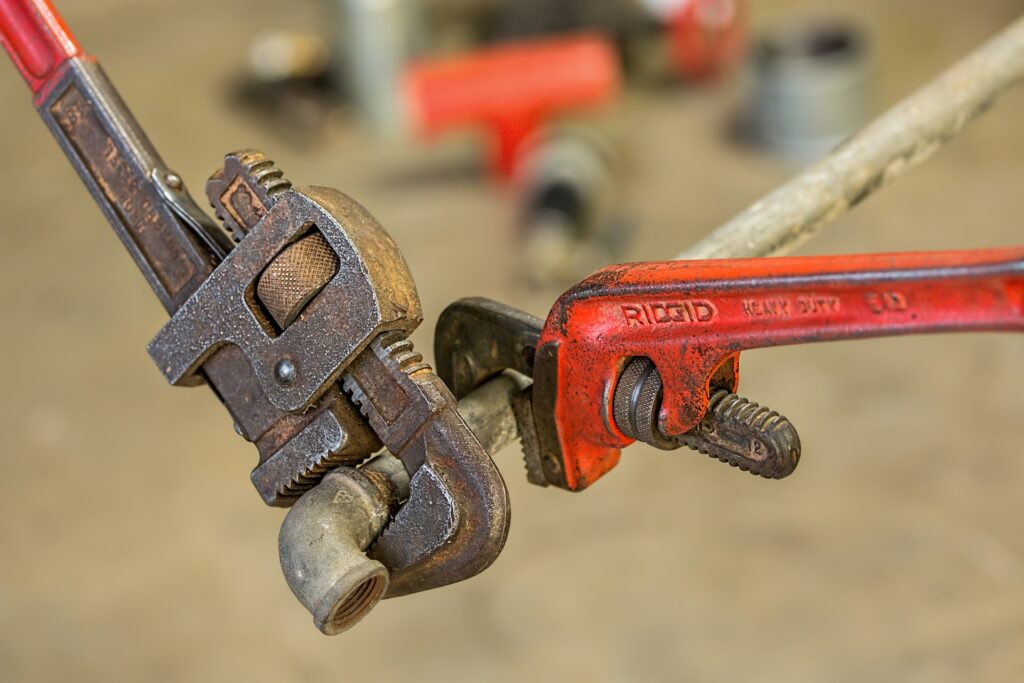Blog
The World of Wrenches: Different Types and Applications

Wrenches are versatile tools that come in various types, each designed to address specific needs and applications.
Wrenches are indispensable tools that have been a staple in the world of mechanics and DIY enthusiasts for centuries. With various types and sizes available, wrenches are designed for a wide range of applications, making them essential for tasks as simple as assembling furniture or as complex as automotive repairs.
This blog article will examine the varied universe of wrenches, highlighting different types and their applications.
The Basics of Wrenches
Before diving into the various types of wrenches, it’s essential to understand the fundamental aspects that define these tools:
Leverage: Wrenches provide mechanical advantage through leverage. The longer the handle or arm of the wrench, the greater the torque that can be applied.
Fixed vs. Adjustable: Some wrenches have fixed openings or jaws, while others are adjustable to accommodate different sizes of nuts and bolts.
Material: Wrenches are typically made from steel or alloy, ensuring durability and strength to withstand high torque loads.
Handle Design: Wrenches come with various handle designs, including open-end, closed-end, ratcheting, and more, each suited to specific applications.
Common Types of Wrenches
Let’s explore some of the most common types of wrenches and their applications:
Open-End Wrenches:
Design: These wrenches have U-shaped openings at both ends, with each end fitting a different size of nut or bolt.
Applications: Open-end wrenches are versatile and suitable for tasks where space is limited, such as plumbing and general maintenance.
Box-End Wrenches:
Design: Box-end wrenches feature closed-loop ends that completely encircle the nut or bolt, providing better grip and minimizing the risk of rounding off edges.
Applications: Box-end wrenches are ideal for high-torque applications, such as automotive work and machinery maintenance.
Combination Wrenches:
Design: Combination wrenches have one open-end and one box-end, allowing for versatility in various tasks.
Applications: These wrenches are a mainstay in many toolkits since they are useful for so many different tasks.
Adjustable Wrenches:
Design: Adjustable wrenches, also known as crescent wrenches, feature an adjustable jaw width, making them suitable for various nut and bolt sizes.
Applications: These versatile wrenches are excellent for tasks that require adaptability, like plumbing repairs and general maintenance.
Socket Wrenches:
Design: Socket wrenches consist of a ratchet handle and interchangeable sockets that fit over nuts and bolts.
Applications: Socket wrenches are commonly used in automotive repair and construction, offering ease of use and a wide range of socket sizes.
Specialized Wrenches for Unique Applications
In addition to the common types of wrenches mentioned above, There are specialty wrenches made for certain purposes:
Torque Wrenches:
Design: Torque wrenches are calibrated to apply a specific amount of torque accurately. They feature a gauge or indicator to ensure precise torque application.
Applications: These wrenches are essential for tasks where precise torque is critical, such as automotive engine assembly and bicycle maintenance.
Pipe Wrenches:
Design: Pipe wrenches have serrated jaws designed to grip and turn pipes and other cylindrical objects.
Applications: Pipe wrenches are primarily used in plumbing and gas line installation, where traditional wrenches may not provide sufficient grip.
Allen Wrenches (Hex Keys):
Design: Allen wrenches have a hexagonal-shaped, L-shaped or T-shaped design and come in various sizes.
Applications: These wrenches are used for tightening and loosening hex socket screws and bolts, often found in furniture assembly and machinery.
Strap Wrenches:
Design: Strap wrenches consist of a flexible strap or chain that wraps around objects, providing a non-marring grip.
Applications: Strap wrenches are ideal for tasks where a secure yet non-damaging grip is needed, such as plumbing and automotive work.
Spud Wrenches:
Design: Spud wrenches combine an adjustable wrench with a tapered handle, featuring a hole or lanyard for tethering.
Applications: Commonly used in the construction and ironworking industries, spud wrenches are ideal for aligning and tightening bolts on structural elements.
Specialty Wrenches for Unique Jobs
For more specialized tasks, several specialty wrenches serve specific purposes:
Oil Filter Wrenches:
Design: Oil filter wrenches are designed to grip and remove oil filters in automotive applications.
Applications: These wrenches are essential for DIY oil changes and routine vehicle maintenance.
Spark Plug Wrenches:
Design: Spark plug wrenches are thin-walled, long wrenches designed to remove and install spark plugs in automotive engines.
Applications: They are crucial for maintaining proper engine performance and fuel efficiency.
Strap Oil Filter Wrenches:
Design: Strap oil filter wrenches use a flexible strap to grip and remove oil filters in tight spaces.
Applications: These wrenches are particularly handy for accessing hard-to-reach oil filters.
Crowfoot Wrenches:
Design: Crowfoot wrenches have an open-end, socket-like design, often used with extensions for torque applications.
Applications: They are useful in situations where a socket wrench cannot fit, such as when working around obstructions.
Safety and Maintenance Tips
Regardless of the type of wrench you use, safety and proper maintenance are paramount:
Safety First: Prioritise safety by always donning the proper personal protective equipment, such as safety glasses and gloves, when using wrenches to protect against potential hazards.
Regular Inspection: Inspect your wrenches for signs of wear, damage, or corrosion. Replace any damaged wrenches to ensure safe and effective use.
Proper Storage: Store your wrenches in a clean, dry place to prevent rust and deterioration. Hanging wrenches on a pegboard or using a tool chest can help keep them organized.
Lubrication: Apply lubricating oil to moving parts to prevent friction and ensure smooth operation.
Conclusion
Understanding the differences between these wrenches and their intended uses is crucial for efficient and safe work.
Whether you’re a do-it-yourself enthusiast or a professional mechanic, having the right wrench for the job can make all the difference in achieving successful results. So, the next time you pick up a wrench, consider which type is best suited for your task, and you’ll be well on your way to tackling projects with confidence and precision.
More reading
The Science Behind Tool Materials: Steel vs. Titanium